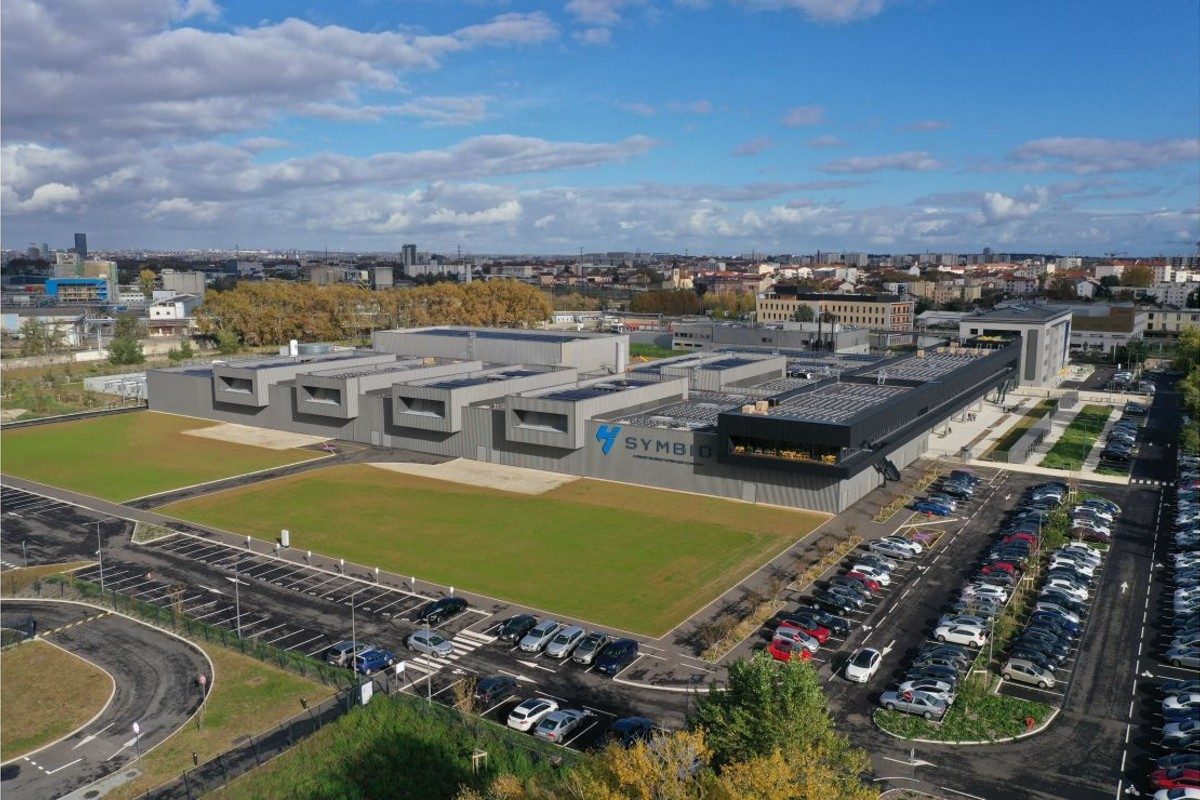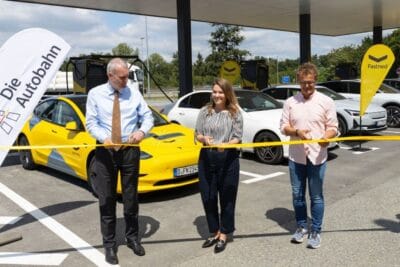Symbio opens large-scale fuel cell production in France
The newly completed SymphonHy plant for hydrogen fuel cell systems located in the greater Lyon area now boasts a production capacity of 16,000 fuel cell systems per year. The plant spreads over an area of 26,000 square meters. An expansion to 40,000 square meters is planned by 2026 to achieve an annual production of 50,000 fuel cell systems. The site is home to Symbio’s headquarters, the production facility, an innovation centre and the Symbio Hydrogen Academy.
The innovation centre alone will employ more than 450 engineers. Of these, 100 will be dedicated to innovation, and around 20 PhDs will be working on a wide range of disciplines, such as electrochemical engineering, chemistry and materials science.
Automation and robotics are to enable the SymphonHy industrial site to produce hydrogen fuel cell systems at a large scale and competitive costs. According to the initiators, this is the key to accelerating a competitive, high-performance, hydrogen-powered transportation sector. Customers should be able to afford zero-emission hydrogen vehicles without compromising on performance. The fuel cell systems are suitable for installation in a wide range of vehicle types, which the joint venture says ranges from light and medium-sized commercial vehicles, trucks, pickups, buses and coaches, up to hoists and off-road mechanical handling equipment.
Symbio shareholders Forvia, Michelin, and Stellantis see fuel cell technology as completely complementary to battery technology, pointing out that hydrogen fuel cell technology is ideal for intensive and demanding professional use with high loads and long distances that require fast refill times.
SymphonHy is part of HyMotive, a €1 billion project to develop future fuel cell technologies, supported by the European Union and the French government as part of the IPCEI program. A second gigafactory is also to be built as part of the project, which will increase total production capacity in France to 100,000 fuel cell systems per year by 2028.
Supporting technologies are also to be developed as part of HyMotive to help make fuel cell technology more competitive. The project aims to achieve parity with battery-powered electromobility and traditional combustion engine technology by 2030. Symbio is set to grow from its current 750 employees to 1,000.
The SymphonHy plant was built in less than two years. Philippe Rosier, Symbio CEO, says the plant is proof of Europe’s industrial and technological leadership. The entire ecosystem and its private and public partners are ready to “scale hydrogen electromobility and make it a sustainable, high-performance and affordable reality,” he said.
Michelin CEO Florent Menegaux noted, “This technology is now proving to be an essential addition to satisfy the need for longer range, particularly for commercial vehicles, which are starting to be fitted out.” He said, “It’s no coincidence that the Group recently announced a range of hydrogen-powered vehicles through its subsidiary Watèa by Michelin, a mobility operator specializing in the energy transition of business fleets, with an offer of hydrogen vehicle(s).”
The rapidly expanding joint venture is also planning a fuel cell gigafactory in the USA, where Symbio has already been operating since 2021. A pilot plant in California was provided for from the Group’s European facilities during the first phase. Stellantis wants to offer the Symbio drive system in large vans, Ram pickups, and heavy trucks on the North American market.
Worldwide, Symbio wants to produce around 200,000 FC systems annually by 2030. The company is also working on its supply chain. Symbio founded a 50:50 joint venture called Innoplate with Schaeffler in June 2022 to manufacture bipolar plates, a strategic component in fuel cells.
Stellantis became Symbio’s third shareholder this summer. The company did not disclose how much paid for its third of the company. Symbio was founded in November 2019 by Faurecia and Michelin and established as a fuel cell manufacturer focusing on the European market. Two years later, the company expanded into the USA. The Stellantis Group was already a close partner of the joint venture before it bought in with a major stake.





0 Comments